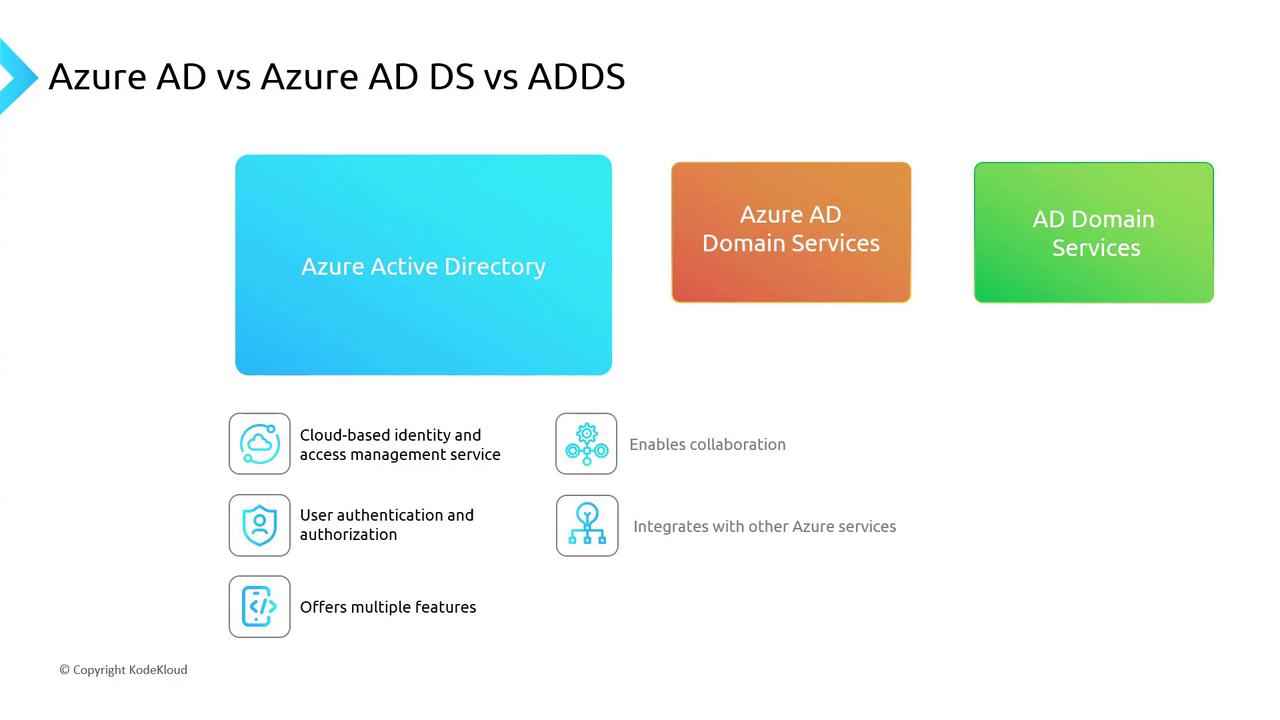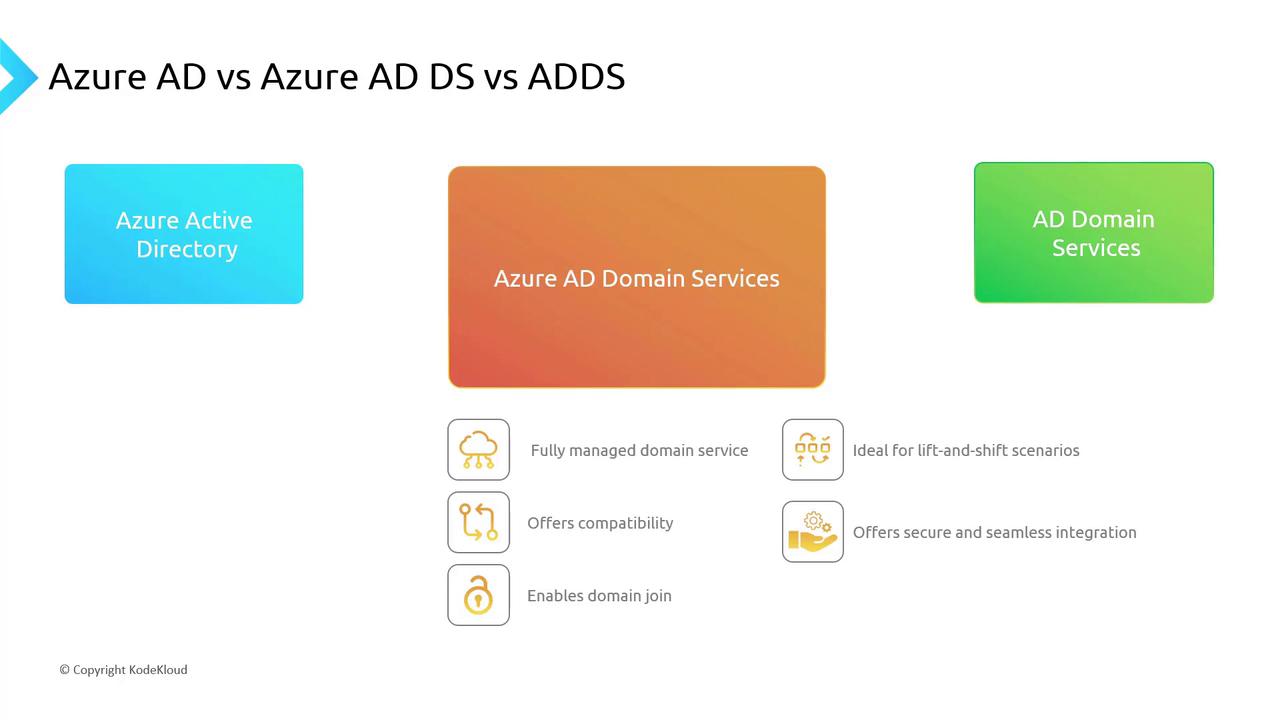Microsoft Azure Security Technologies (AZ-500)
Secure Azure solution with Azure Active Directory
Compare Azure AD vs Active Directory Domain Services
In this article, we examine the key differences between Azure Active Directory (Azure AD) and Active Directory Domain Services (AD DS), with a particular focus on Azure AD Domain Services (Azure AD DS). This detailed comparison will help you choose the right identity management solution for your organization's evolving digital infrastructure.
Azure Active Directory (Azure AD)
Azure AD is a cloud-powered identity and access management solution ideal for modern digital ecosystems. It offers centralized management for user authentication and authorization, eliminating the need to juggle multiple passwords. With features like single sign-on and multi-factor authentication, Azure AD provides a secure and streamlined experience for users.
Azure AD also supports external collaboration through robust B2B and B2C capabilities and integrates seamlessly with both Azure services and third-party applications. This integration helps create a cohesive identity management framework that is both powerful and flexible.

Note
If your organization is moving towards a cloud-first strategy, Azure AD provides an extensive suite of tools and integrations designed to secure and simplify identity management.
Azure AD Domain Services (Azure AD DS)
Azure AD DS serves as a bridge between traditional on-premises Active Directory environments and the Azure cloud. It brings familiar domain services—such as domain join, group policies, and LDAP support—into a fully managed cloud environment, making it easier to lift-and-shift on-premises applications.
By integrating directly with Azure AD, Azure AD DS allows administrators to leverage centralized identity management while maintaining the traditional Active Directory experience. This is particularly useful during migration projects, as it minimizes the need for on-premises infrastructure.

Active Directory Domain Services (AD DS)
Active Directory Domain Services (AD DS) is the on-premises solution that has powered enterprise networks for decades. It provides essential services like domain join and group policy management within Windows environments. AD DS has been the backbone of many organizations' IT infrastructure, offering robust identity and access management for traditional deployment models.
Deploying AD DS, however, requires dedicated on-premises infrastructure, which may not be ideal for organizations looking to leverage cloud benefits. It remains the go-to solution for environments that rely heavily on Windows Server deployments and require complete control over their identity services.

Conclusion
To summarize, each service brings specific benefits tailored to different IT strategies:
- Azure AD: Best for cloud-based identity and access management with integrated security features.
- Azure AD DS: Provides a managed and cloud-enabled version of traditional AD functionalities without the need for on-premises infrastructure.
- AD DS: Offers a robust, on-premises solution ideal for organizations with established Windows Server environments.
Choosing the correct service is crucial for ensuring secure, flexible, and efficient management of user identities. Organizations looking to modernize their IT infrastructure may benefit from leveraging Azure's cloud capabilities, while those with a heavy on-premises investment might continue using AD DS.
Further Reading
For more detailed insights into identity management solutions, consider exploring Azure Active Directory Documentation and Active Directory Domain Services Overview.
Watch Video
Watch video content